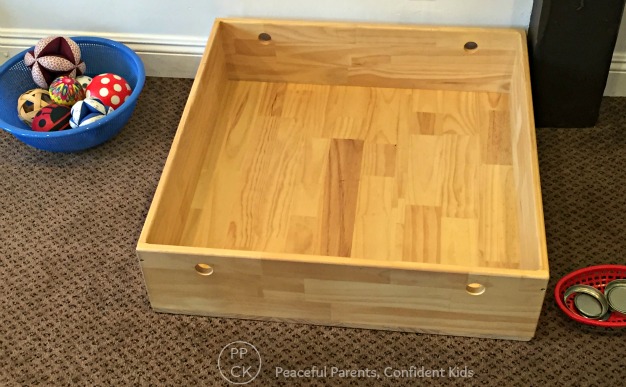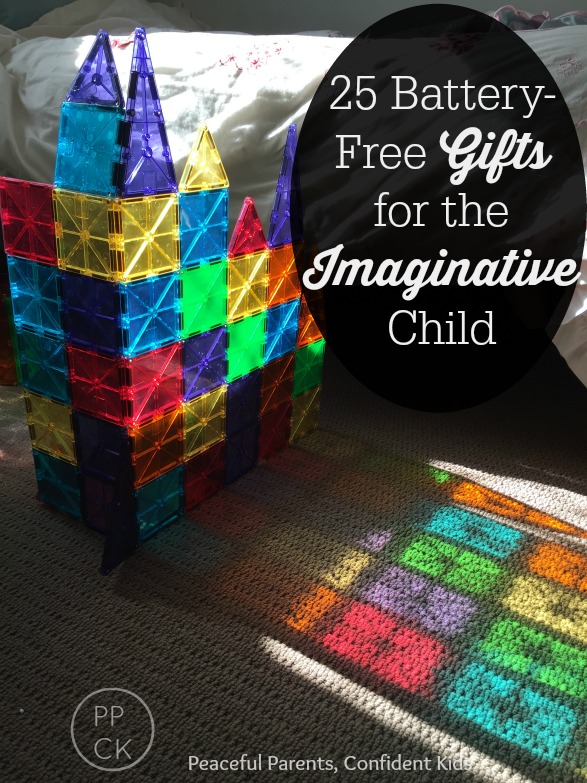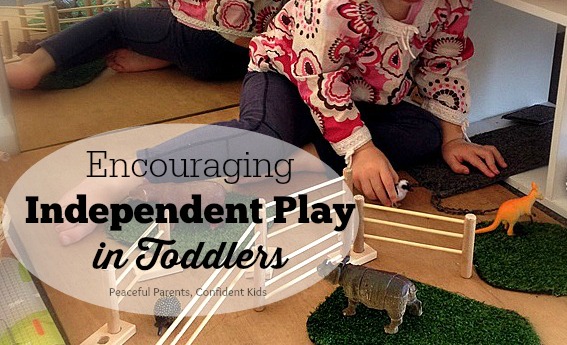Today, I’ve been keenly following posts from Janet Lansbury depicting the play rooms of some of her followers. I have loved seeing how they have used (in most cases) minimal space to create a beautiful play environment for their toddlers. Many have used mirrors on walls to reflect light and be a focus point for curious crawlers. The use of book shelves is consistently seen to organise the toys neatly for the children to access and cosy areas are often created with the use of mats, cushions or other props to help define areas throughout the room. In all cases, the rooms are beautifully presented with all toys neatly in their homes and furniture in perfect alignment.
Reading through many of the comments that arose after each picture was posted, I noted that a lot of followers were amazed at how tidy the rooms were and how ‘inadequate’ they felt upon seeing such perfectly presented play rooms. It got me thinking, how do these people keep their rooms in such good order (even if it is just for a photo). Are their toddlers neat and tidy and return their toys to their homes after each time they use them? Highly unlikely! Are the parents extremely fastidious about cleanliness and tidiness and run behind after their toddlers all day ensuring everything is in its correct place? Good for them if they can keep that up day in and day out – haha!
I believe, in all likelihood, that its actually something to do with their room design, toy choices and layout. In my early days of parenting, I went a little nuts buying toys. Initially, it was manageable inside a couple of cupboards in the play areas I had designated for the kids. But following a couple of Christmases and a rather large first birthday party, it got to the stage where the cupboards (not to mention any spare drawers, boxes or corner areas) were so full that I literally had to hold the toys in place and close the door quickly so that they wouldn’t fall out. Of course, this meant that as soon as my daughter, Lucy, (2yrs) opened the cupboard, either the toys fell out around her or as soon as she pulled one thing out, five more would come with it. This not only created an instant mess but also meant that she would get distracted by all the toys that had come out and the original toy she was aiming for would be forgotten – not ideal when I was aiming to increase her attention span! This also occurred with the toys I had piled in boxes and neatly stored. She would rummage through the box to get to a toy and in doing so, would inevitably upend the whole box onto the floor and pretty soon, my seemingly orderly toy area was resembling a kids junk sale, rummaged through by 50 kids. With such a chaotic play space, the type of play that ensued was quite fragmented with each item discovered on the floor receiving about 3.6secs of attention before being discarded for the one that got tripped over or sat on or noticed out of the corner of her eye.
Clean up became a nightmare too as I tried hard to fit all the toys back into the cupboards, drawers and boxes so they wouldn’t fall out. 99% of the time, this could only be done once the kids were in bed because as I tried to put things away, my curious toddlers decided THAT was the toy they wanted to play with and would move heaven and earth (including all their other toys) to get it.
Upon seeing some other amazing play rooms on sites such as Play at Home Mum and An Everyday Story and venturing into the world of RIE, I realised that I needed a big toy clean out. My children did not need access to all their toys at once and in fact, this was counterintuitive for them developing creativity and independence in their play. I found an old book shelf in the garage and went to K Mart and bought a cheap shelving unit with 4 pigeon holes. I chose simple toys that would engage my children and develop their imaginations and problem solving and placed them neatly in their own spaces on the shelves such that no toy was touching another – each had its own designated area.
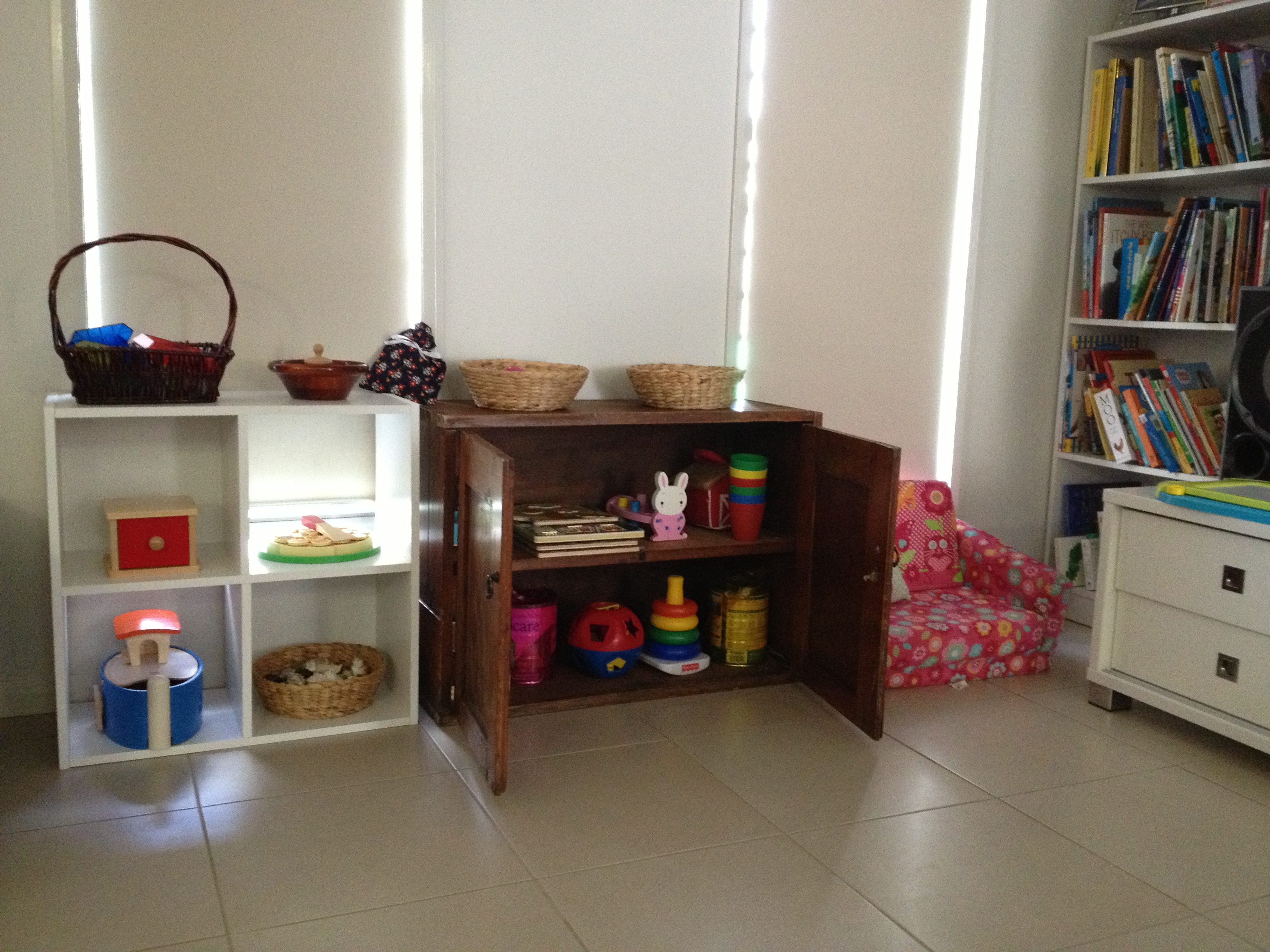
This is a small area for play we have set up in the only living room in the house. We recently moved a large coloured mat away from this space as the bright design meant that many puzzle pieces and other small objects became ‘lost’ causing loss of interest or frustration. We are now on the lookout for a plain design rug for here.
I was amazed how much more orderly the toy room suddenly became. The kids would come and pick out just one toy and sit down with it to explore. When they finished playing with that toy and went to collect another, I started gently talking to the girls about where the toys belonged and together we would put the used toy back in its place. Occasionally, now, Lucy will put her toy back in its home once she has used it but more often she leaves it out and goes in search of her next activity. I don’t mind though as I know that, to her, play is far more important and who am I to interrupt such important work in progress. I do find it really easy to pack things away myself though while the kids focus on another task or even at the end of the day when they have gone to bed, because each toy has its own space and there just isn’t the volume of toys there used to be strewn across the floor.
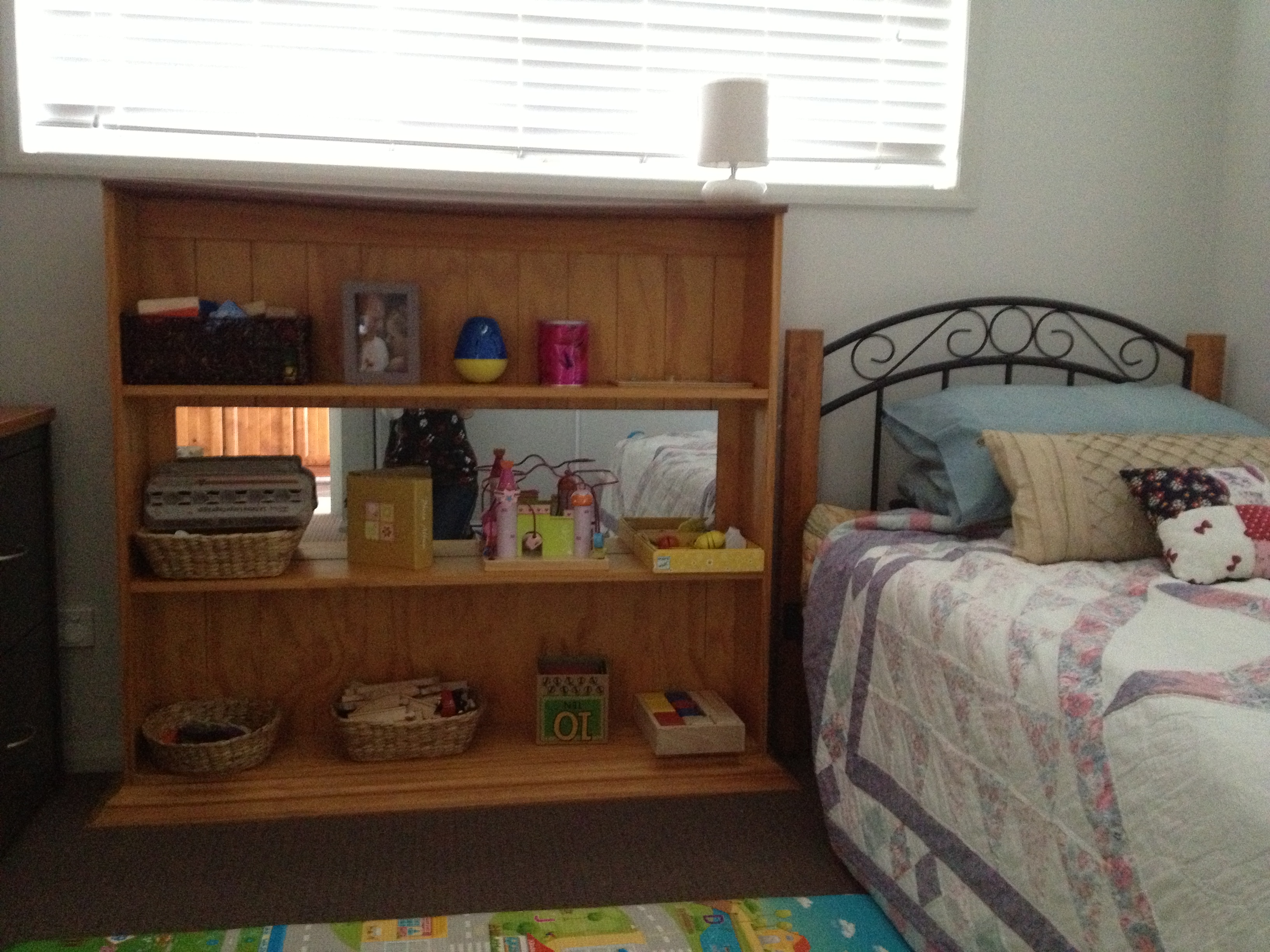
This is a small room at the front of the house that couples as a toy room, office space and guest bedroom. With each toy having its own space, clean up is easy.
Like others on Janet’s blog today, I introduce ‘new’ toys occasionally, swapping them for ‘old’ ones to keep the excitement alive. Toys ‘out of rotation’ are kept in the garage, out of the children’s reach and I am constantly amazed each time I reintroduce an ‘old’ toy at how the children react to it differently and find new ways to use it. I guess they have learned, developed and grown in the time since the toy was last out and can use their new found skills to create a new experience for themselves.
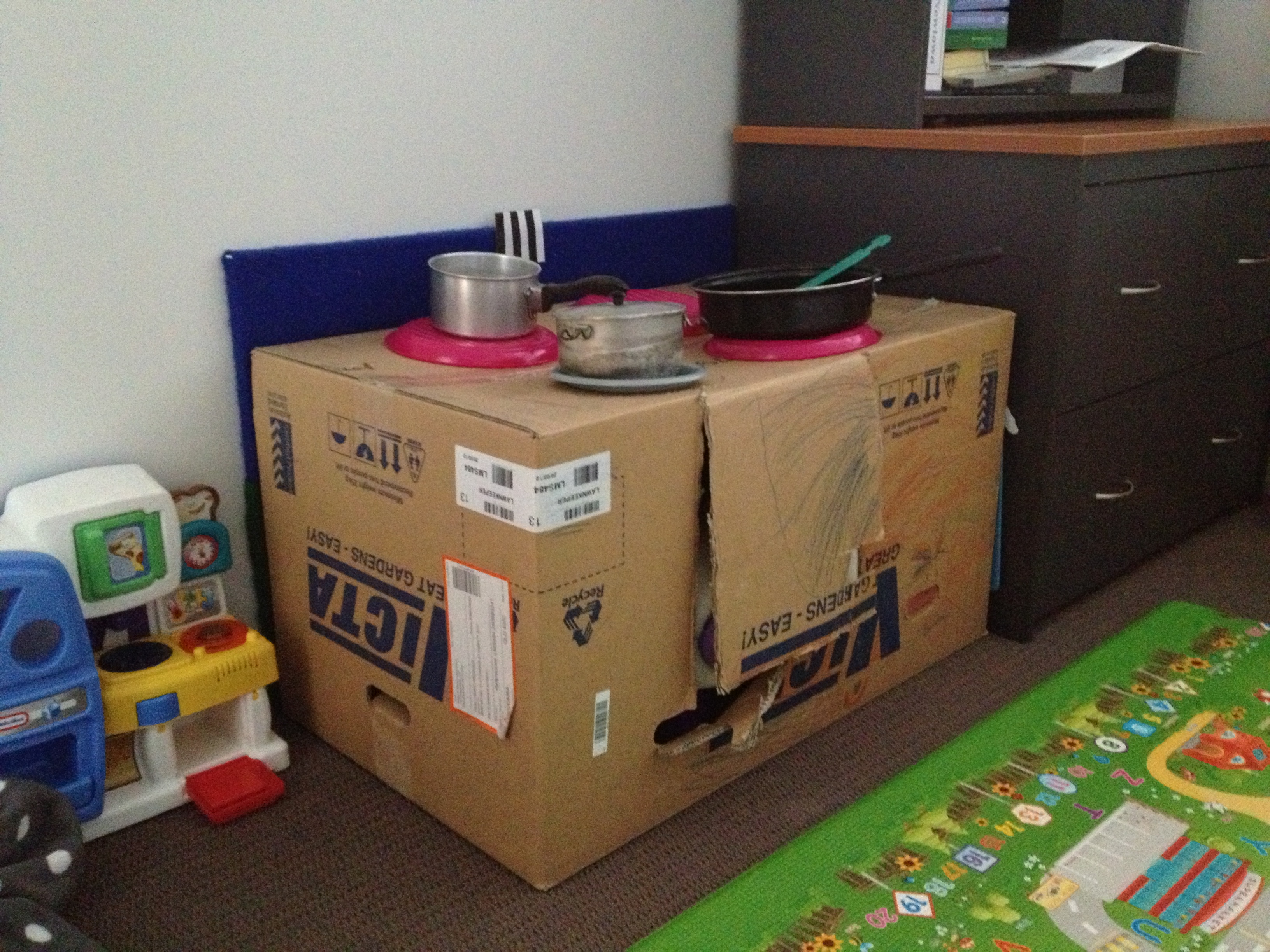
This cardboard box is being used as a stove top. The kid’s soft toys live inside the ‘oven’ part of the box and a few utensils for cooking live in the bottom left hand draw of the filing cabinet, to the right of the box.

